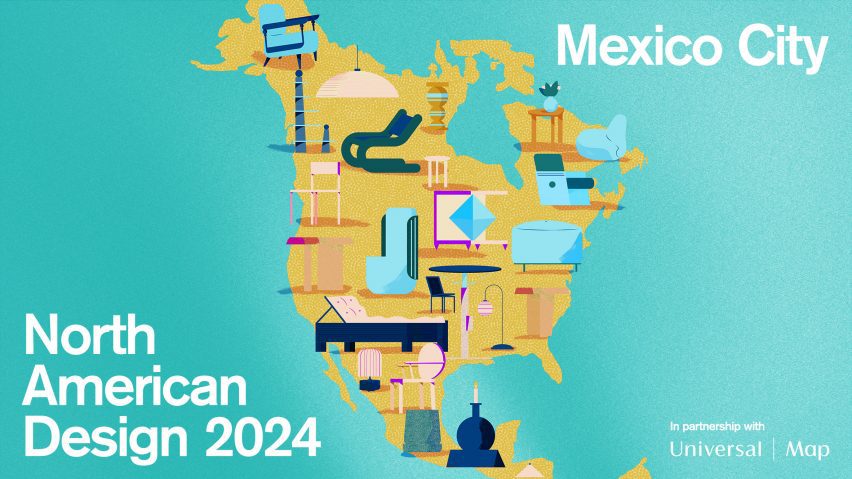
Ten independent studios demonstrating the diversity of design in Mexico City
We're highlighting 10 designers working with different materials and styles in Mexico City as the latest part of our North American Design 2024 series, which highlights independent designers across the continent.
From traditional designs in wood and textiles to the use of high-tech machinery and urban waste, the independent designer studios in Mexico City represent a wide swath of approaches.
Mexico City has more inhabitants than any other city in North America and is characterised by its international population as well as the prevalence of small-scale manufacturers and fabricators.
The roots of the contemporary design scene in Mexico City go deep – and many people draw on both pre-Columbian techniques and symbolism as well as on colonial and modern design languages.
"In the 20th century, there was a lot of social turmoil in Mexico, which prompted artists and creators to search for a national modern identity," architect and Design Week Mexico co-founder Andrea Cesarman told Dezeen.
"This led to a renaissance in all arts, including architecture, art, design, and literature. The creatives were seeking a language that was their own, and the turbulent times and the need for activism provided fertile grounds for expression, making Mexico a center for artistic innovation."
At the mid-century, the country underwent a renaissance of design, attracting international attention.
Design schools including Ibero and UNAM were opened to outfit the growing infrastructure and spaces.
Rediscovering value
"After the revolution, the Mexican government was keen on making Mexico a modern country by actively supporting cultural institutions and public art projects, as well as public buildings that required industrially made furniture to furnish them," said Cesarman.
"This era had a place within the global narrative of modern design, known as the Mexican miracle."
However, after the oil crisis of the 1970s, this mid-century momentum slowed and by the 1990s, designers in the city were marked by a "sense of darkness", according to Cesarman, due to the lack of projects and prospects.
"This situation gave rise to a new generation of designers in the 1990s who sought to create a new language, leading to the birth of our contemporary design scene," she said. "It was a rebirth, focusing inward rather than outward, and rediscovering our value."
Cesarman said that this upward trend and process of rediscovery continues today, and Mexico City is again ascendant on the world stage.
Designers such as Héctor Esrawe and Manu Bañó have paved a path for contemporary designers to gain international recognition by leveraging the highly skilled craftspeople in the country.
"The combination of strengths in Mexico City – including its vibrant creativity, capacity for wonder, low production costs, cultural diversity, acknowledgement of historical reality, and appreciation for the value of creativity and craftsmanship –makes it an incredibly fertile ground for creativity today."
Read on for 10 independent design studios at different points in their careers working in Mexico City today.
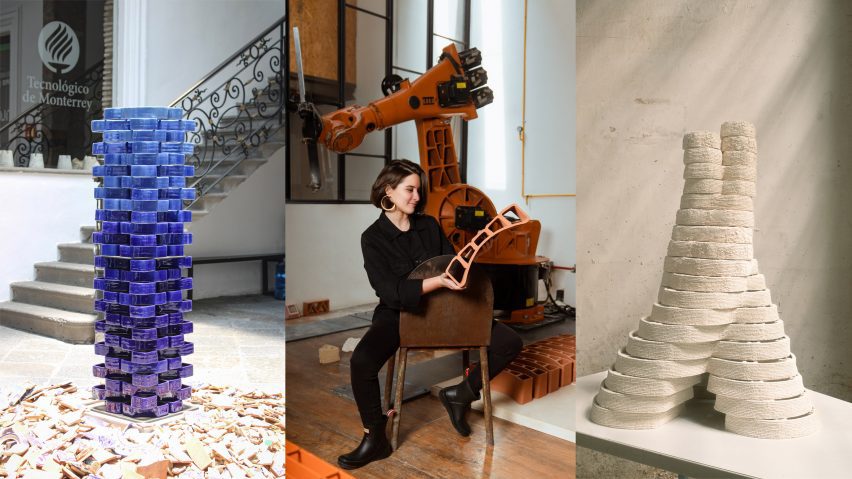
Manufactura
Founded by Dinorah Schulte in 2o22, Manufactura uses traditional materials such as ceramics and biocomposites made from food with robotic technology to study "the relationship between analogue and digital fabrication".
"The fundamental purpose of Manufactura is to highlight the synergy between tradition and innovation to create a new sustainable way of making," Schulte told Dezeen.
"Tradition and technology are not in opposition; instead, they engage in dialogue to allow more sustainable manufacturing, ensuring heritage and customs are not erased by machines."
Schulte has researched with a number of international architecture studios and universities and uses locally sourced waste streams such as eggshells to create aggregates for her machines.
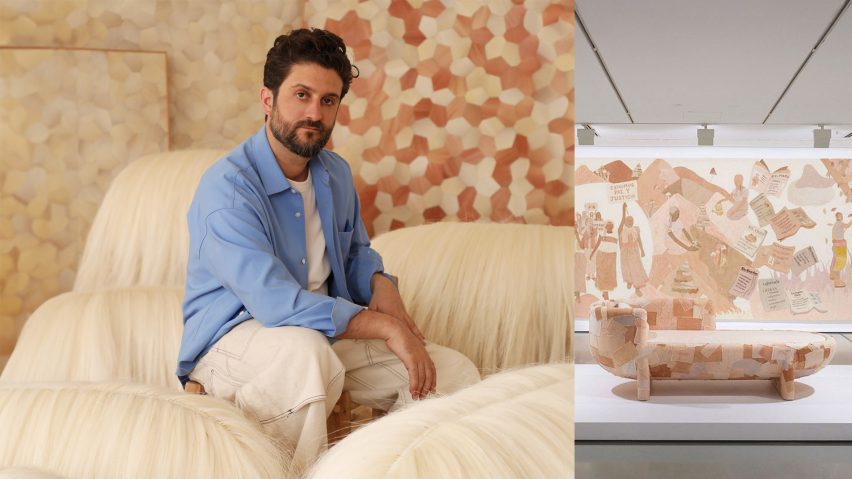
Fernando Laposse
Trained in London, Fernando Laposse worked under designers such as Bethan Laura Wood and Faye Toogood before returning to Mexico during the pandemic – where he said a "lack of formality in comparison to more established industrialised economies" and mixing of disciplines has created a vibrant scene.
His practice takes relatively underutilised materials important in the Mexican production cycle, such as corn husks and agave fibres to create novel materials and production techniques that he teaches to people living in rural and agricultural communities to provide new forms of work and to help mitigate the effects of erosion, failing biodiversity and migration.
"Rather than trying to solve these issues universally, I try to find solutions to the problems faced by one community in particular," Laposse told Dezeen, adding that the whole process from planting to creating materials and furniture is done within the communities.
"The projects are all applied within the boundaries of their common lands and after a decade of work we are seeing some real results like the reintroduction of heirloom corn that was lost in the 1990s and a reforestation project with agaves that is regenerating eroded mountain ranges"
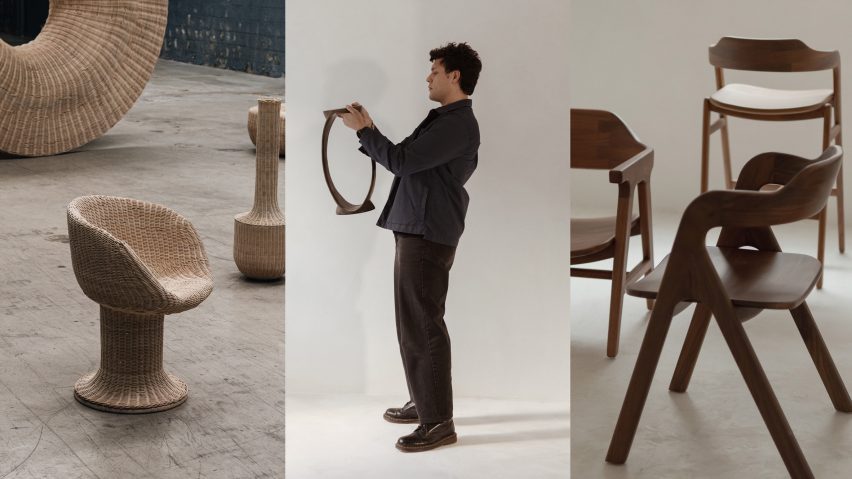
Dórica
Sebastián Angeles, through his studio Dórica, designs minimal furniture, mostly chairs, from a range of materials from wood to bronze and wicker, having worked both in other design studios and under master craftspeople and fabricators in Mexico.
Informed by experiential and natural phenomena such as soundwaves and roots, Angeles said he wants to highlight the emotional connections between objects and people in the furniture.
"Design is not simply about expressing myself through materials, but rather enabling the objects I design to convey a unique personal expression," he told Dezeen.
"I consider materials as a vehicle for the dialogue I wish to establish with the user. Often, I find that certain sensations and inherent characteristics of materials enrich this dialogue."
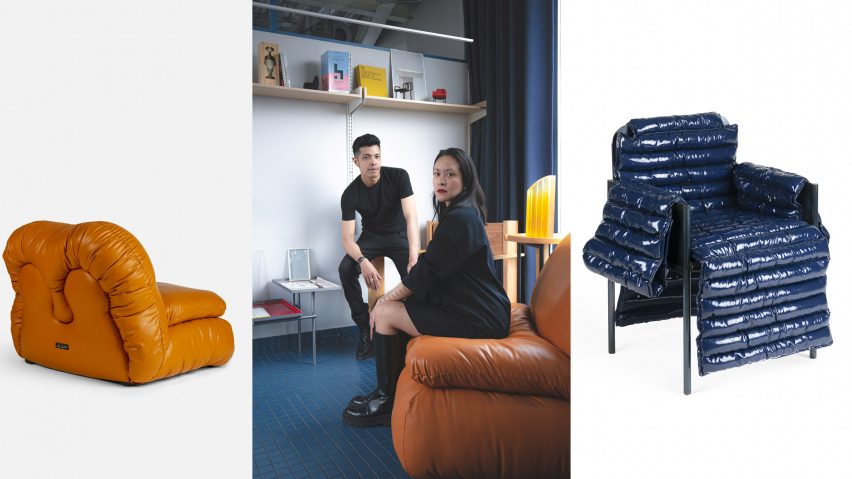
The Cult
The Cult is known for its colourful designs and bulbous, upholstered chairs, but the studio has a wide range of designs that include simple wooden pieces and metal shelving systems.
It was founded by Alaide Alejandre Araiza and Guillermo E Alejandre Araiza – both graduates of UNAM.
"We believe that design, essentially, is the solution to specific problems," the studio told Dezeen, adding that many of its experiments are oriented around the needs of clients.
"We not only strive to create beautiful pieces or projects, they must also be functional and profitable for the client. We believe that good design is also good business."
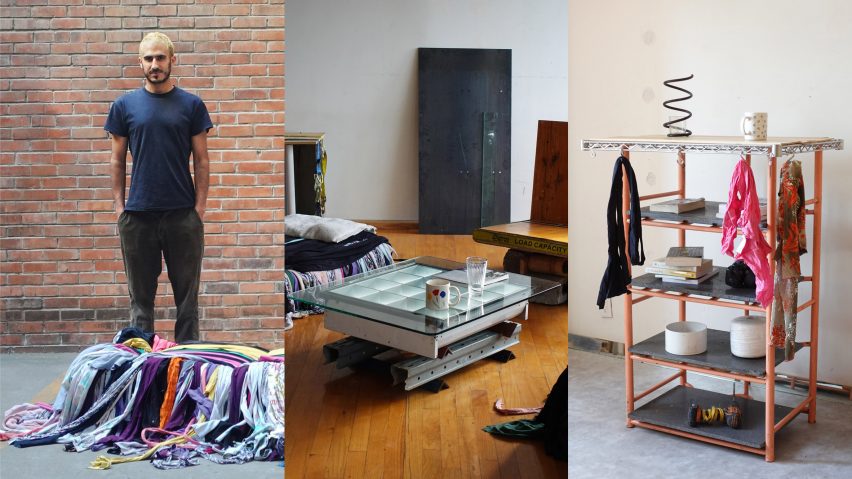
Ex-Soup
Founded by Javier Guzmán and architect Ulises Morin, Ex-Soup is a practice that creates one-of-a-kind sculptural furniture works from found materials around Mexico City.
Guzmán's DIY practice was informed by historical designers such as Enzo Mari and he first began to notice materials for furniture works while working at architecture sites in the city.
"We see our work in the context of ecological transition and degrowth. In these times, the question of resources is becoming a central issue for architecture and design," Guzmán told Dezeen.
"We like to call what we do as 'cycling' and 'queering objects', we use found or discarded materials and we don't subject them to any transformation involving heat, paint, glue or any energy-consuming processes, so in a way we don't 'produce' anything, we make ensembles of what is already produced," he continued.
"We see what we do more as a performance than a production process since nothing is being produced."
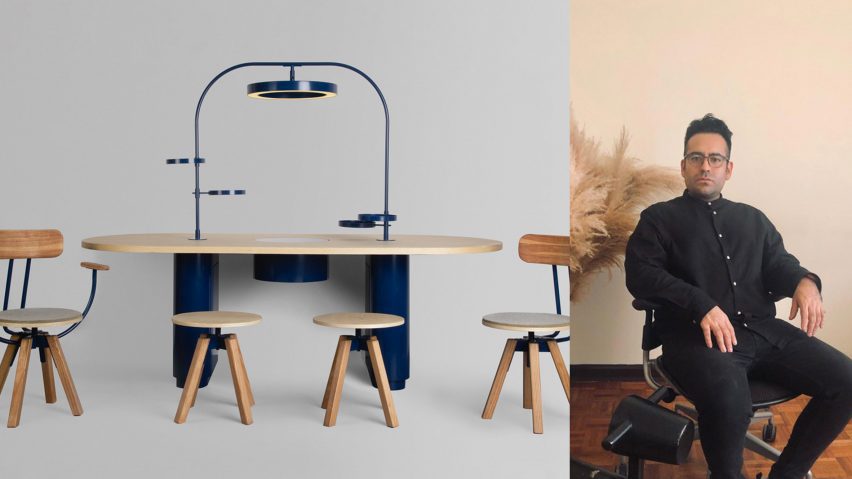
Ali Silva
Having worked with design studios, in factories and in museography, Ali Silva creates furniture that merges industrial design with traditional practices – such as a minimal table with a central heating element used to heat tortillas.
The designer uses wood and metal coated in biodegradable finishes and tries to combine artisanal elements with industrial processes such as CNC.
"I try to integrate our customs and shape them with functional objects that are easy to assemble and disassemble, thinking about reintegration into the environment, " Silva told Dezeen.
"I am working on ontology focused on objects to be able to process information and print it on objects."
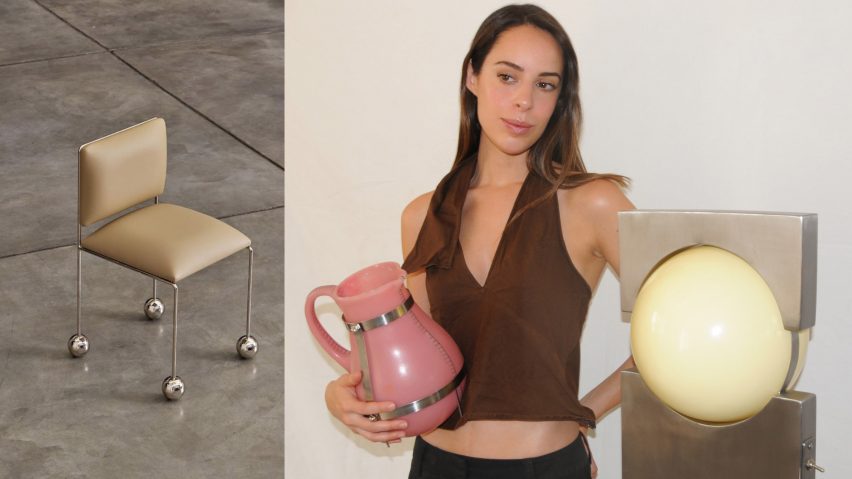
Panorammma Atelier
Founded in 2020 by Maika Palazuelos, Panorammma Atelier utilises large amounts of metal in its industrial and sculptural pieces, which vary in their functionality.
Palazuelos said that she aims to use materials in non-conventional ways such as polishing industrial slag until it looks like stone.
"We've also worked with industrial residue from welders and chrome workshops. These materials typically have cross-contamination from different metals and cannot be worked on as regular metals," she told Dezeen.
"Some pieces touch on ideas that are relevant to me personally and in an overarching narrative I believe this type of design (collectible or experimental design generally) stands against the expanding role that abstraction and alienation occupy in the social sphere."
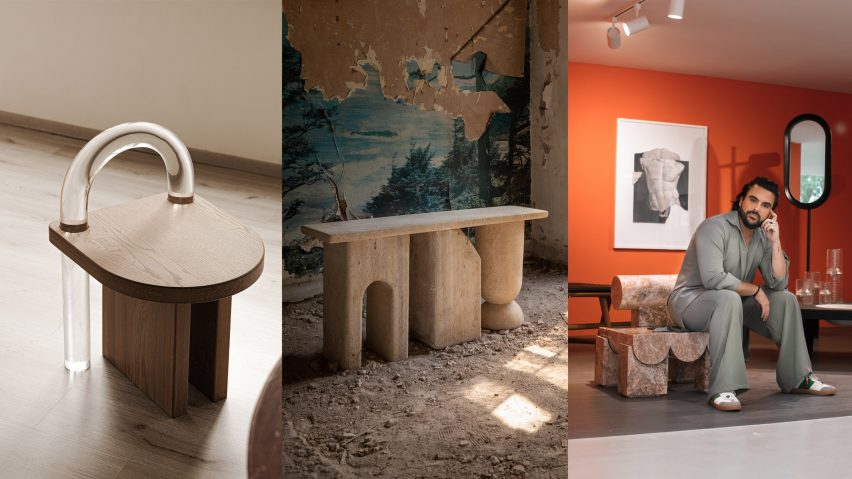
Raul de la Cerda
Raul de la Cerda and his studio create sculptural furnishing from wood and stone. It has collaborated under the Esutdio Difane label, which promotes Mexican designers.
De la Cerda was trained in Mexico City and Madrid. He said that maintaining a personal style while meeting the needs of specific projects is an underlying concern of his practice.
"Always thinking about how to meet those needs without losing my identity and ensuring it aligns with the design and functionality of a project," he told Dezeen.
"This is an incredible part of my profession, but at the end of the day, we are not working for ourselves; we are serving and meeting the needs of others. We must be very conscious and responsible with all the decisions we make."
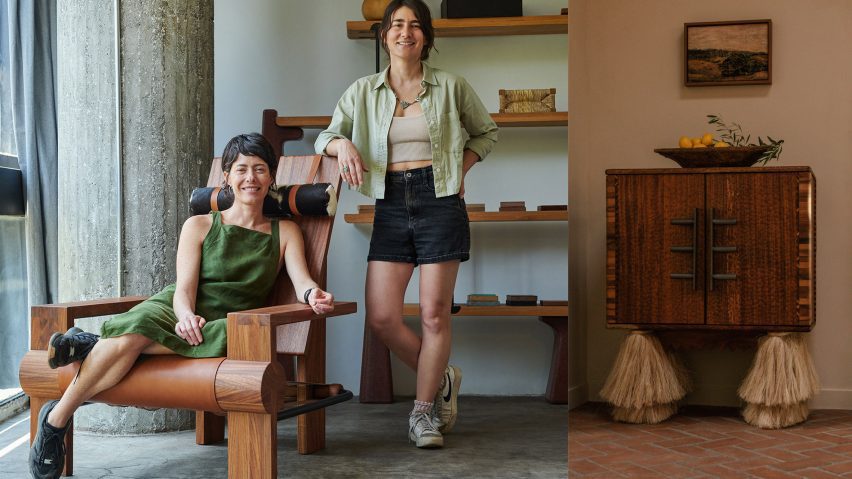
Comité de Proyectos
Comité de Proyectos creates wood, stone and fabric furniture, contracting all of the fabrication work out to local workshops to leverage the strength of small-scale craftspeople and manufacturers.
Founded in 2014 by Andrea Flores and Lucia Soto, Comité de Proyectos integrates the modern and traditional into its singular designs.
"We have a wide network of suppliers who support us in developing our projects," the pair told Dezeen.
"This allows us creative freedom to use any type of material or technique we want without being tied to a single workshop. During each project, whether it's interior design or furniture, we dedicate a significant amount of development time to the search and research of materials"
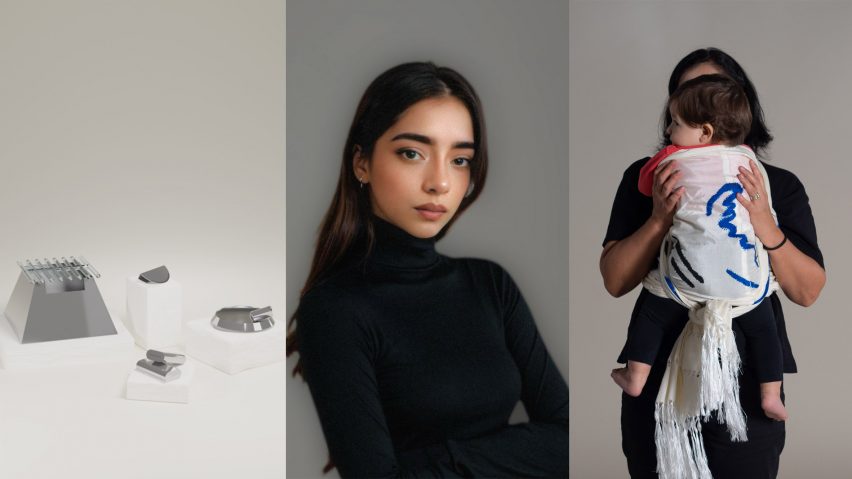
Rexistencia
According to founder Regina Infanzón, Rexistencia was born in 2022 out of a desire to bring "empowerment and protest" into design by creating pieces aimed towards improving the lives of marginalized people and women.
Infanzón often works with collectives such as Diseña Colectiva, and has created collections of traditional cooking implements and installations protesting inequality and labor practices.
"These collaborations aim to promote fair labor practices, defend labor inclusion in Mexico and create artisanal design pieces that use traditional techniques and processes," she told Dezeen.
"For me, design transcends mere passion; it embodies a relentless pursuit of solutions and enhancements to address the societal challenges we confront daily. I firmly believe that objects possess the inherent ability to function as instruments for evoking intricate emotions, such as empathy, and for catalyzing collective ideological transformation."
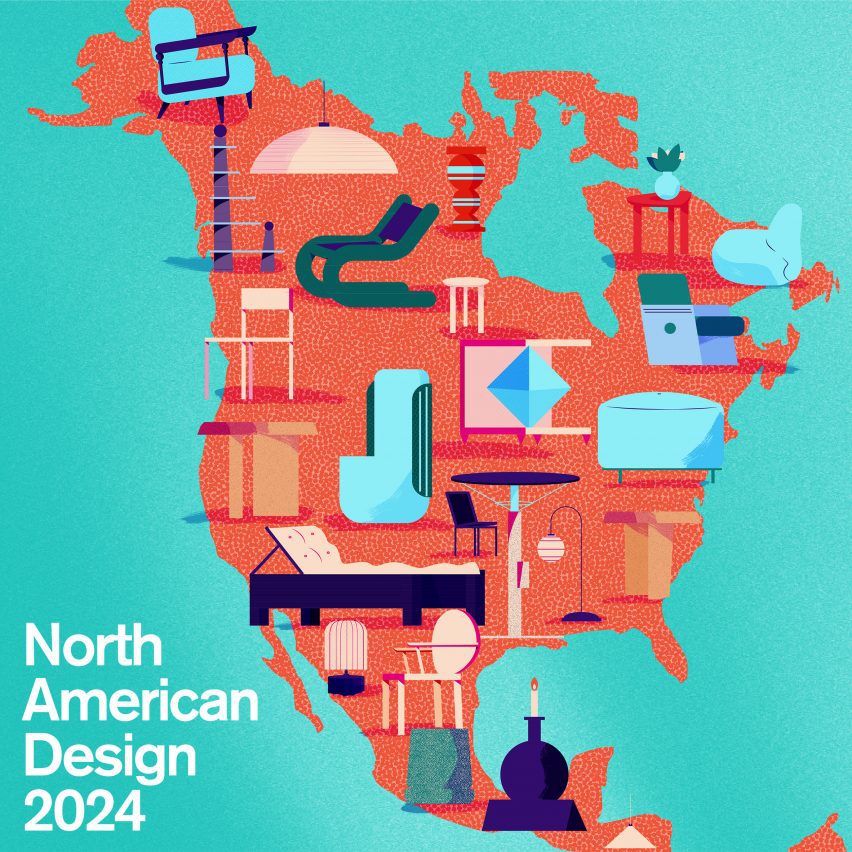
North American Design 2024
This article is part of Dezeen's North American Design 2024 series selecting independent furniture and product design studios from cities across Canada, Mexico and the United States.
The first edition of this series is created in partnership with Universal Design Studio and Map Project Office, award-winning design studios based in London and now in New York. Their expansion into the US is part of The New Standard, a collective formed with Made Thought.